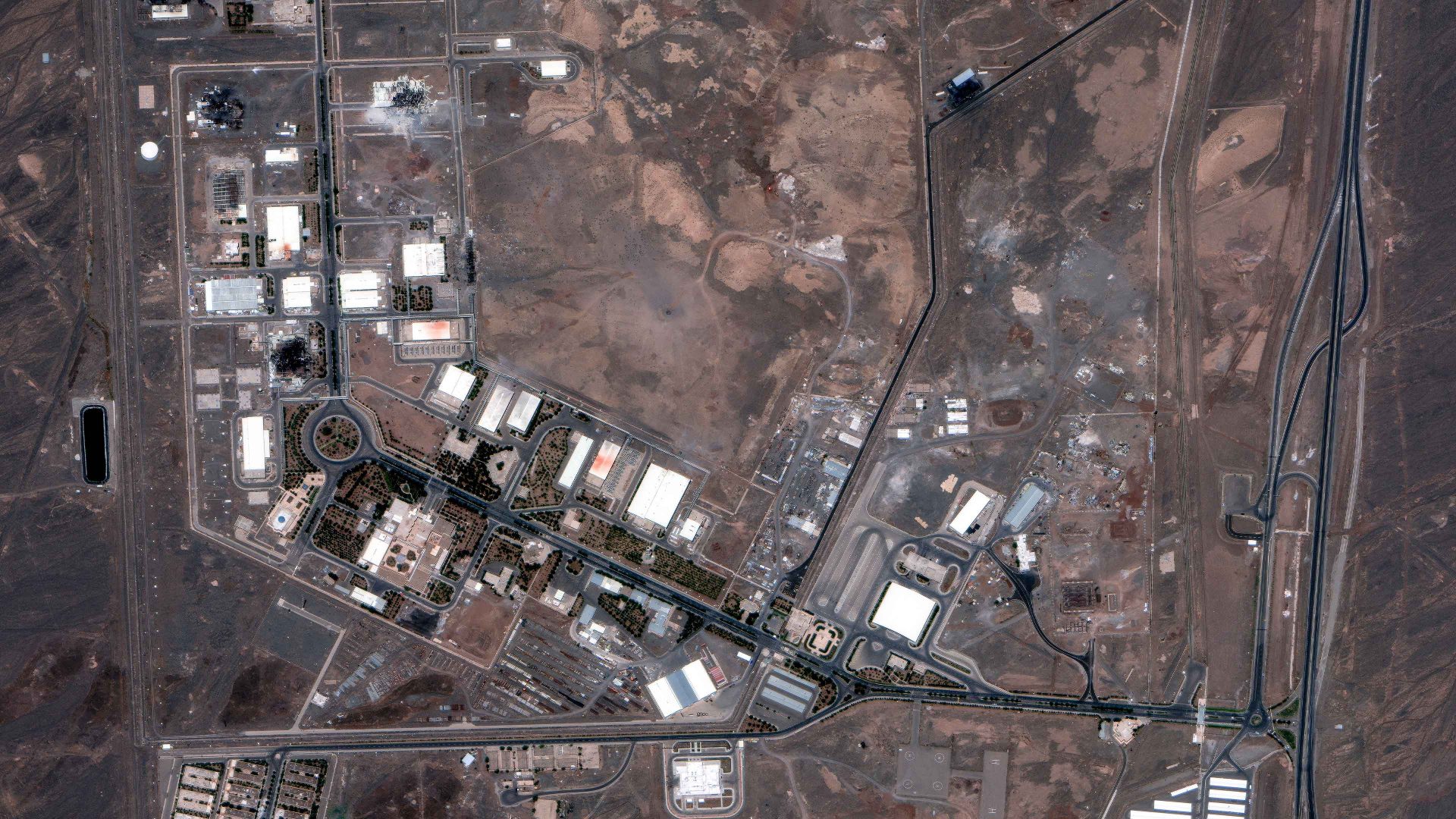What does the bombing of nuclear facilities in Iran by Israel and the United States imply for the hazards of nuclear contamination? Do such attacks risk a Chernobyl-scale catastrophe from the fallout of radioactive material?
The short answer is probably not, but with the provisos that there are certainly potential dangers within the local vicinity, and that there seems to be only very limited information about what was at these facilities and what damage was done, and about the state of Iran’s nuclear programme in general.
Uranium produced directly from its natural ore can’t be used either in nuclear reactors or in weapons. Both devices rely on a fission chain reaction, in which the spontaneous radioactive decay of some uranium atoms, as well as releasing energy, produces particles that stimulate the decay of others. But the atoms that undergo such fission are those of the uranium isotope U-235, which makes up less than 1% of natural uranium. Most natural uranium is U-238. For a nuclear weapon, the uranium must be “enriched” by separating the isotopes to produce material that is around 90% U-235.
Such enrichment was being conducted at the three facilities hit by the US and Israeli attacks, at Fordow, Natanz and Isfahan. Fordow is 80-90 metres underground at a remote mountain site in the north of Iran, and is believed to be a key enrichment facility for the regime’s nuclear plans. It was reportedly hit by a dozen “bunker buster” bombs from a US B-2 bomber, while Natanz and Isfahan, previously attacked by Israel, were targeted by 30 cruise missiles from US Navy submarines.
The standard method of enrichment involves instruments called centrifuges, which spin gaseous uranium hexafluoride (made from uranium ore) at very high speeds. The heavier isotope sinks preferentially to the bottom of the container as it spins, enabling a gradual enrichment of fissile U-235.
Suggested Reading


Why there is still no consensus on what quantum mechanics means
According to the International Atomic Energy Authority (IAEA), Iran was thought to have around 9,250kg of enriched uranium by mid-May, mostly still as uranium hexafluoride gas rather than the metal used for reactors and bombs. Of this, about 400kg was believed to have been enriched to 60%, which is not yet weapons-grade but would eventually be enough for about 10 nuclear bombs. Getting from 60% to 90% in a centrifuge can be relatively quick, potentially taking under a week.
The whereabouts of Iran’s enriched uranium is not known; it might have been moved to secret locations. It is also possible that Iran has other undisclosed centrifuge facilities. Donald Trump’s claim to have taken nuclear arms out of Iran’s hands is therefore probably little more than bravado, although the attacks will surely have inflicted considerable damage on its nuclear programme.
Natanz seems primarily to have been designed to enrich uranium to the lower levels needed for nuclear power, and it was subject to IAEA oversight. (Iran’s nuclear programme has been operating for nuclear energy since the 1950s, and as a signatory to the Nuclear Non-Proliferation Treaty of 1970 it is legally bound not to acquire nuclear weapons.) The centrifuges at Natanz are underground, and it is not known how much damage the attacks inflicted. It is possible that both here and at the other facilities, there has been release of uranium hexafluoride gas from canisters, which poses a significant radiation hazard if the gas is inhaled or ingested but also serious dangers from chemical toxicity: if it comes into contact with moisture, the compound can form a highly corrosive acid.
An explosion that resulted in enriched uranium being dispersed would pose a local danger, but nothing like the plume of radioactive contamination created by the Chernobyl meltdown. There the real threat came from some of the radioactive elements generated by uranium fission within the reactor: isotopes of caesium, strontium and iodine. So the fallout from a bomb or a reactor disaster is worse than that from destruction of a uranium enrichment facility. The nuclear technology centre at Isfahan does house three small research reactors, however. The IAEA said that the US attacks have so far generated “no increase in off-site radiation levels”.
The political fallout is another matter. Lacking congressional approval, Trump’s attacks seem to be a clear violation of US law, and seem unlikely to end the nuclear threat from Iran. According to the Bulletin of the Atomic Scientists, “many experts said that direct US military action would likely make a negotiated end to Iran’s nuclear programme all but impossible and could lead the country to decide to pursue nuclear weapons quickly and covertly”.




